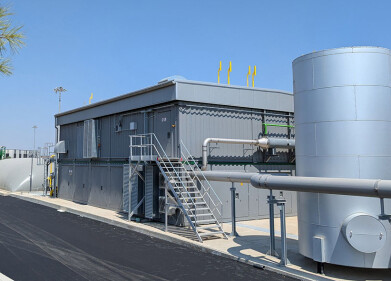Air clean up
How Much Pollution Does Remote Working Cut Out?
Jul 02 2020
Since lockdown measures were introduced across the UK on March 23rd, there has been a huge uptick in remote working and a concurrent drop-off in transportation. With more and more people confined to their homes for the entirety of their working day, there has been less traffic on our streets. According to the Department of Transport, the number of cars on our roads has fallen by 60%, while bus journeys are down by 90% and both rail and underground travel has all but disappeared.
This has, of course, had a significant impact on ambient air pollution. There have been numerous studies and demonstrative maps which highlight how harmful toxins such as carbon dioxide (CO2) and nitrogen dioxide (NO2) have fallen across the globe since lockdown. But how much pollution has remote working actually cut out, and how much of an effect can we expect it to have in the future?
The case for
The latest figures from China show that concentrations of NO2 fell by as much as 63% during the imposed lockdown period in Wuhan City, the epicentre of the COVID-19 outbreak. That not only suggests that remote working is an excellent method of managing NOx emissions, but may also have actually saved lives. It’s estimated that the reduction in pollution led to 496 fewer premature deaths in Wuhan, 3,368 fewer deaths in Hubei Province and 10,822 fewer deaths in China in general.
Of course, not all of that reduction in air pollution can be attributed to remote working, and it should not be suggested that coronavirus has had a beneficial effect on the country in any form. It does, however, point to the fact that NO2 has fallen sharply because of fewer cars and buses on the road and that a similar phenomenon will likely continue if more people opt for remote working in the future.
The case against
On the other hand, there are a number of variables and quantifying factors which must be taken into account if a comprehensive assessment of how effective remote working will be in reducing pollution in the long run is to be achieved. For example, many workers may wish to compromise once lockdown restrictions have been lifted by spending part of their working week at home and part in the office. This way, they can take advantage of the freedom and flexibility of the former, while still enjoying the social aspect of the latter.
Unfortunately, it’s possible that this can lead to trade-offs that could negate or even completely offset the benefits of home working. Indeed, one study found that those who worked from home for part of the week would be content to live up to 10 miles further away from their workplace, thus significantly increasing the emissions on those days they do go into the office. Similarly, the claustrophobic effect on spending hours in a single location may encourage people to travel further for recreational purposes. As such, it’s nigh-on impossible to quantify how much remote working improves air quality and reduces transport-related pollution and that while it’s likely to do so to some degree, it’s by no means a certainty.
Events
May 11 2025 Vienna, Austria
May 18 2025 Algiers, Algeria
23rd International Water Management Exhibition
May 20 2025 Prague, Czech Republic
Singapore International Water Week Spotlight 2025
Jun 23 2025 Singapore
Jun 25 2025 Sao Paulo, Brasil














